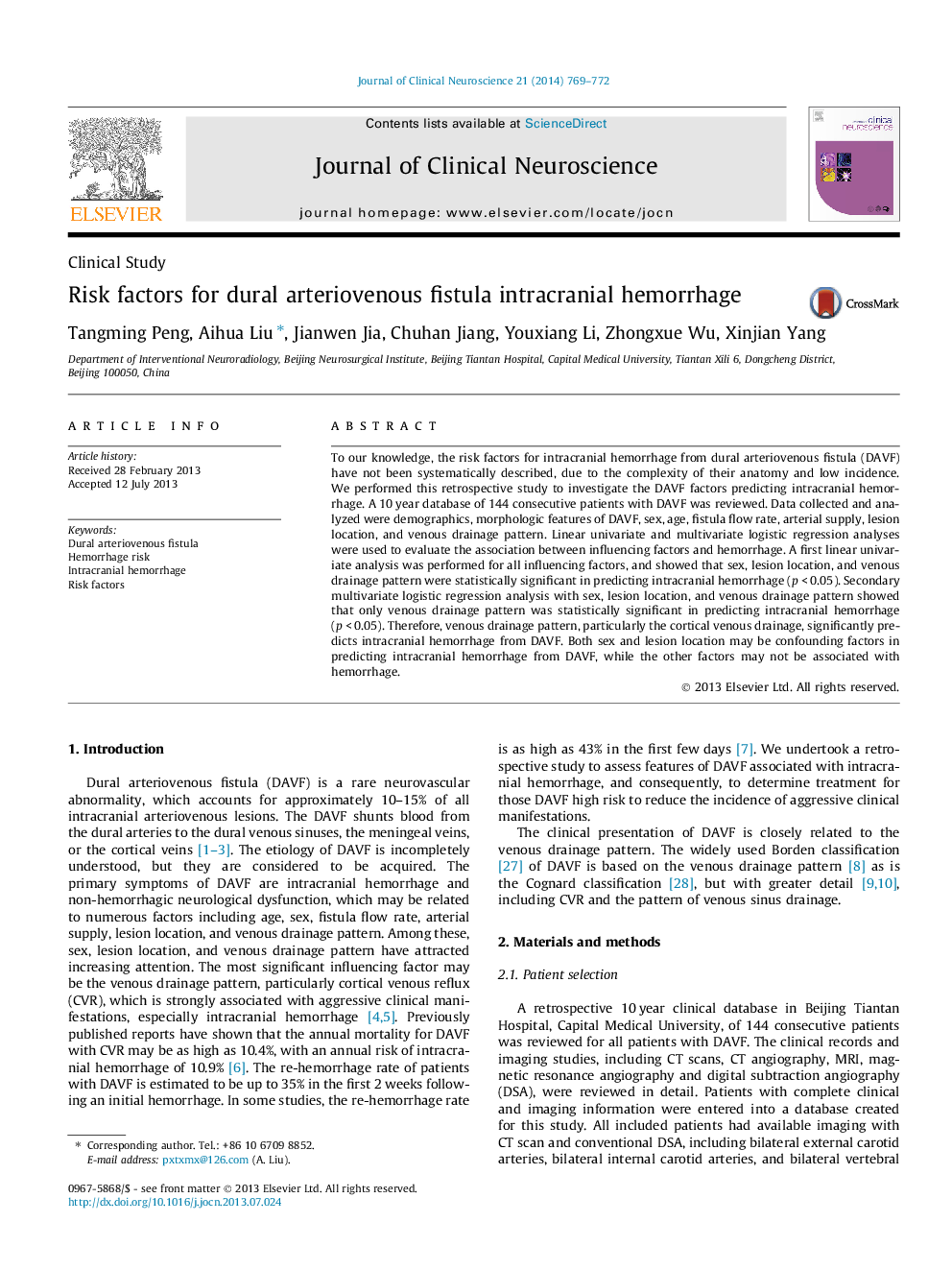| Article ID | Journal | Published Year | Pages | File Type |
|---|---|---|---|---|
| 6019651 | Journal of Clinical Neuroscience | 2014 | 4 Pages |
Abstract
To our knowledge, the risk factors for intracranial hemorrhage from dural arteriovenous fistula (DAVF) have not been systematically described, due to the complexity of their anatomy and low incidence. We performed this retrospective study to investigate the DAVF factors predicting intracranial hemorrhage. A 10 year database of 144 consecutive patients with DAVF was reviewed. Data collected and analyzed were demographics, morphologic features of DAVF, sex, age, fistula flow rate, arterial supply, lesion location, and venous drainage pattern. Linear univariate and multivariate logistic regression analyses were used to evaluate the association between influencing factors and hemorrhage. A first linear univariate analysis was performed for all influencing factors, and showed that sex, lesion location, and venous drainage pattern were statistically significant in predicting intracranial hemorrhage (p < 0.05). Secondary multivariate logistic regression analysis with sex, lesion location, and venous drainage pattern showed that only venous drainage pattern was statistically significant in predicting intracranial hemorrhage (p < 0.05). Therefore, venous drainage pattern, particularly the cortical venous drainage, significantly predicts intracranial hemorrhage from DAVF. Both sex and lesion location may be confounding factors in predicting intracranial hemorrhage from DAVF, while the other factors may not be associated with hemorrhage.
Related Topics
Life Sciences
Neuroscience
Neurology
Authors
Tangming Peng, Aihua Liu, Jianwen Jia, Chuhan Jiang, Youxiang Li, Zhongxue Wu, Xinjian Yang,
